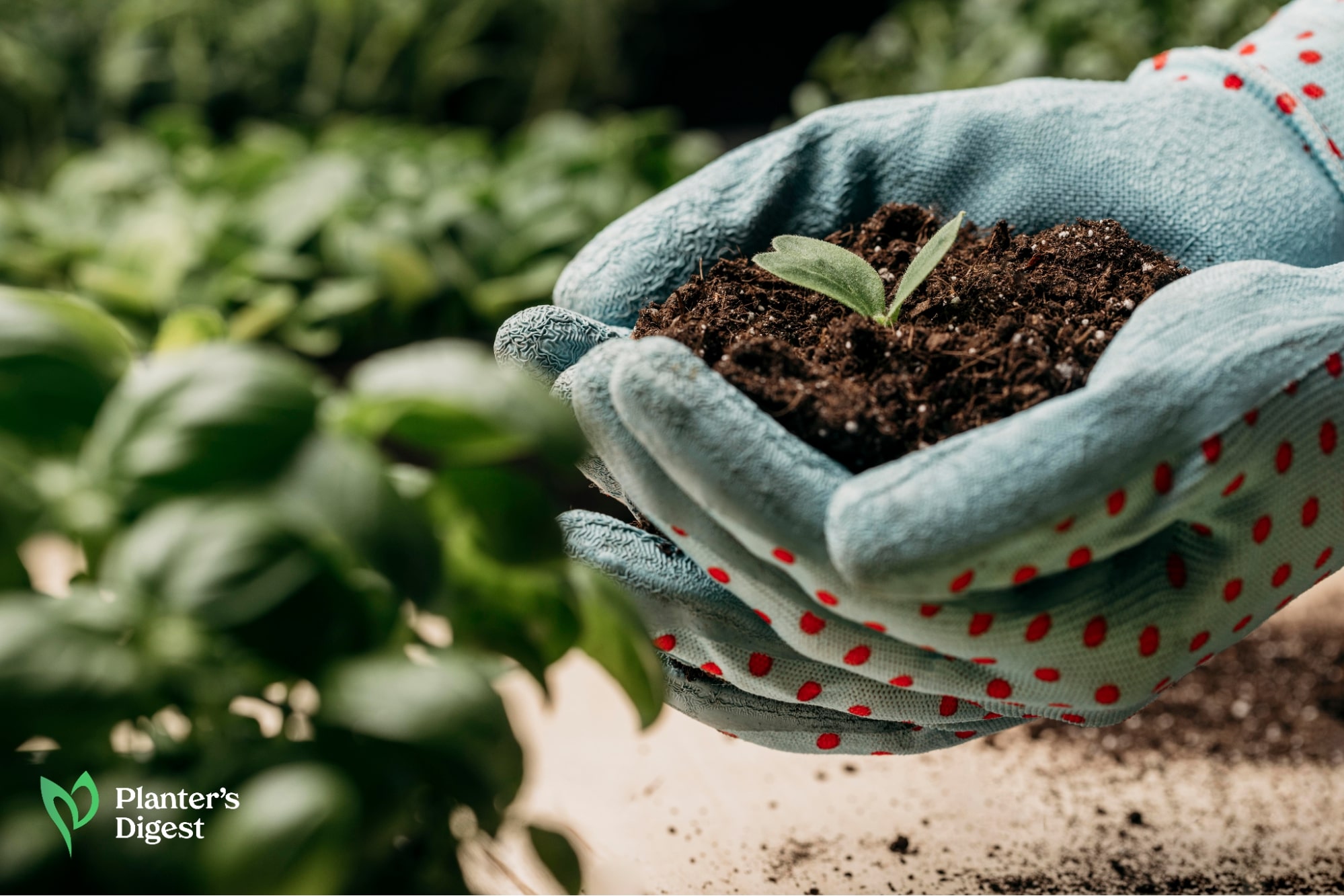
Even plants have superfoods, and they come in the form of fertilizers. These superfoods provide the essential nutrients plants need for optimum development and growth, such as nitrogen.
But what happens when you apply a fertilizer with low or no nitrogen? Can they still keep your plants healthy?
Read on to learn the answers to your questions and everything you should know about low-nitrogen fertilizers. Let’s get started!
What is low-nitrogen fertilizer?
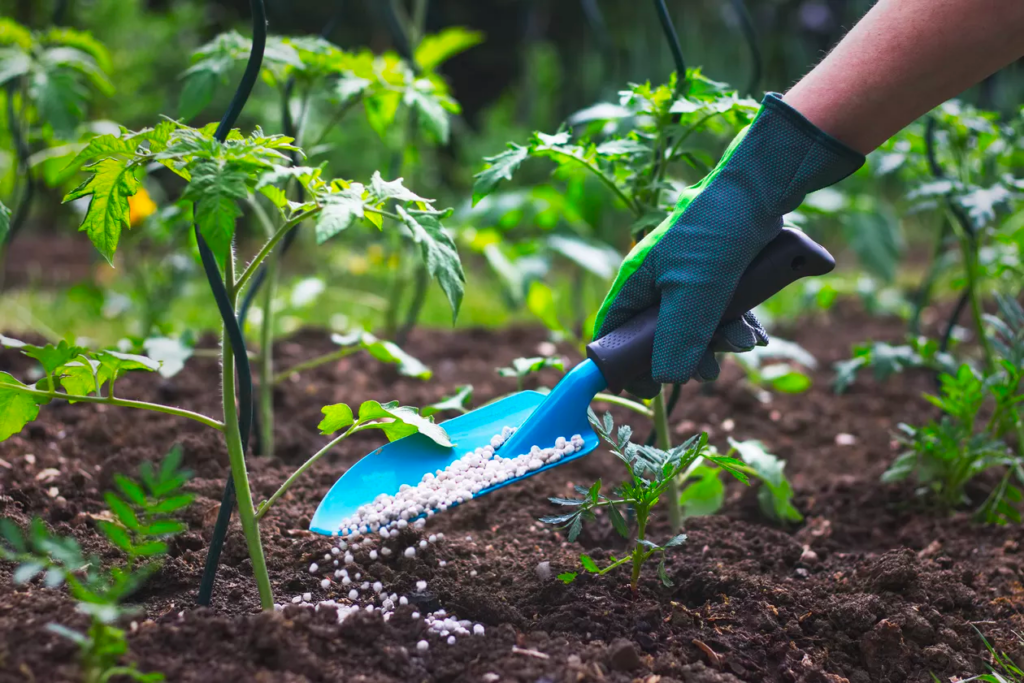
Essentially, a low-nitrogen fertilizer contains 0% nitrogen or 3% (or lower) nitrogen by weight. They are commonly used to encourage plants to produce more fruits and flowers.
Every fertilizer package comes with three numbers which stand for the amount of nutrients it contains. Generally, the big three nutrients are nitrogen (N), phosphorus (P), and potassium (K).
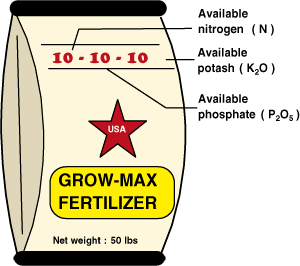
The first number indicates how much nitrogen the fertilizer contains. So, for example, if a 100-pound bag of fertilizer is labeled 10-10-10, it means it contains:
- 10% or 10 pounds of nitrogen
- 10% or 10 pounds of phosphorus
- 10% or 10 pounds of potassium
- 70% or 70 pounds of filler
When should you use low-nitrogen fertilizers?
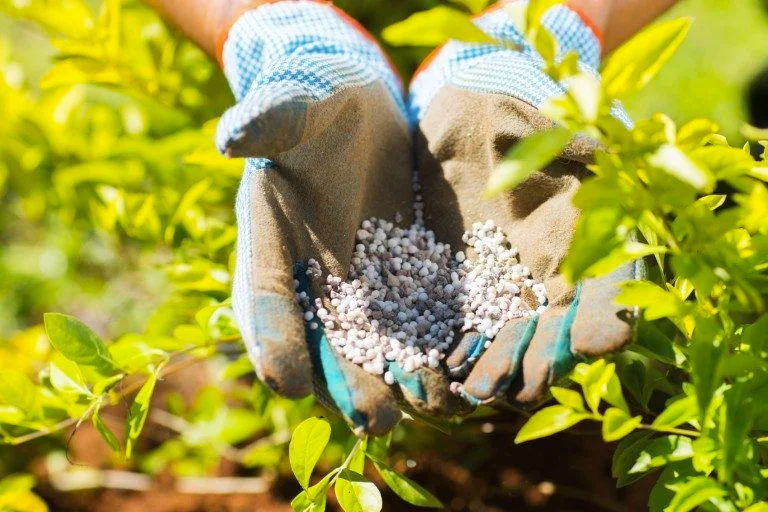
1. To address nutrient deficiency
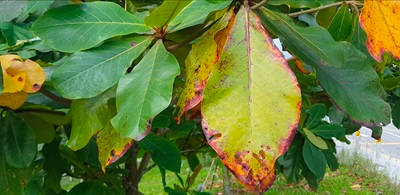
Sometimes, having enough nitrogen in the soil is not enough. You’ll have to use low-nitrogen fertilizer to prevent burning the plant while supplying the nutrients it needs, such as iron, sulfur, magnesium, calcium, potassium, and phosphorus.
For instance, if a plant lacks phosphorus, the leaves tend to have purple or bronze discolorations on the upper and lower side of old leaves.
If the plant lacks potassium, the newly-matured leaves’ edges turn yellow and brown, moving towards the midrib as the deficiency continues.
2. To restore nutrient balance
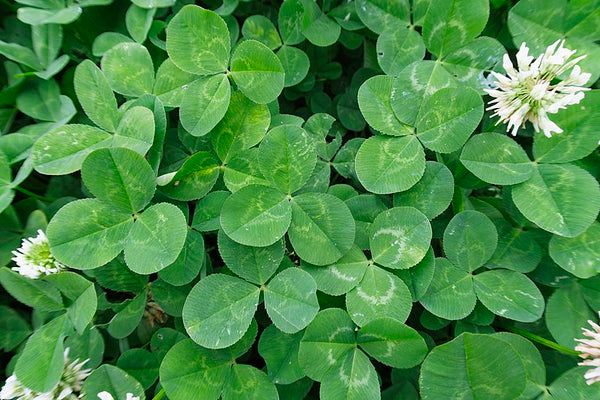
Your soils might have gotten excessive nitrogen content due to improper or over-application of high-nitrogen fertilizers, such as when applying fresh manure in your garden.
Unfortunately, too much nitrogen in the soil causes lower yields, no flowering and poor vegetable quality.
Low-nitrogen fertilizers also help increase the number of antioxidants in herbs and vegetables. Too much nitrogen decreases the flavors and medicinal properties of herbs and vegetables, making them leggy.
So, low-nitrogen fertilizers will surely come in handy to prevent this tragedy.
3. To prevent fertilizer burns
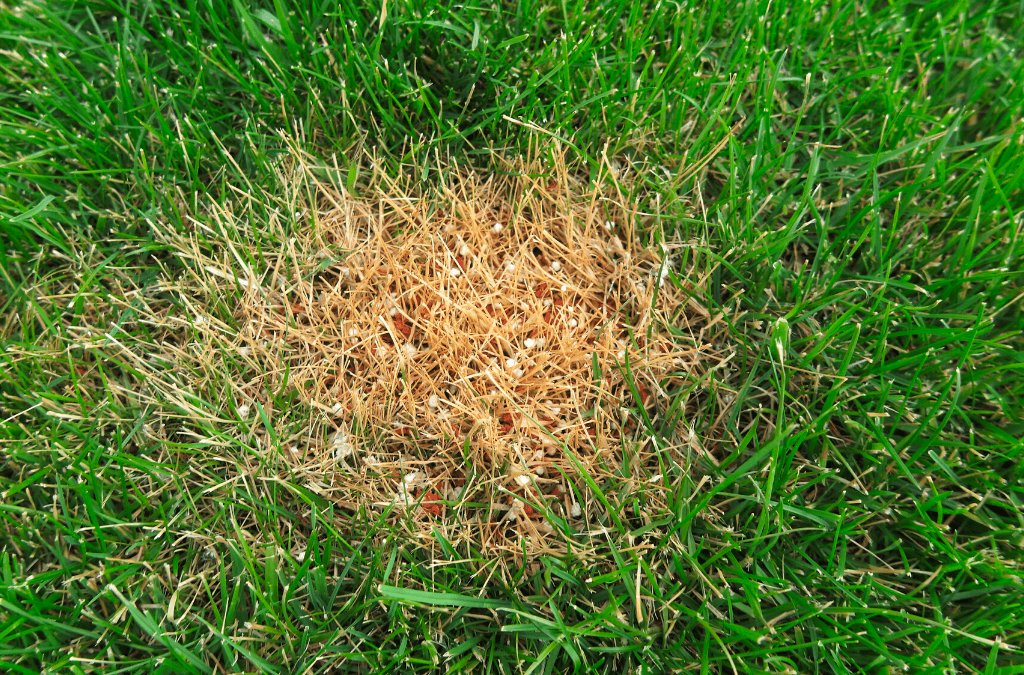
Ammonium-based fertilizers are high in nitrogen. They also have salts that acidify the soil.
When there is a presence of excess nitrogen in the plant, the salt content absorbs the water from the plant, leaving them to dry out and figuratively get “burned quickly.”
As a result, plants get fertilizer burns that either damage or kill them. Low-nitrogen fertilizers are an excellent idea to protect your plants from fertilizer burns.
4. To encourage fruiting or flowering
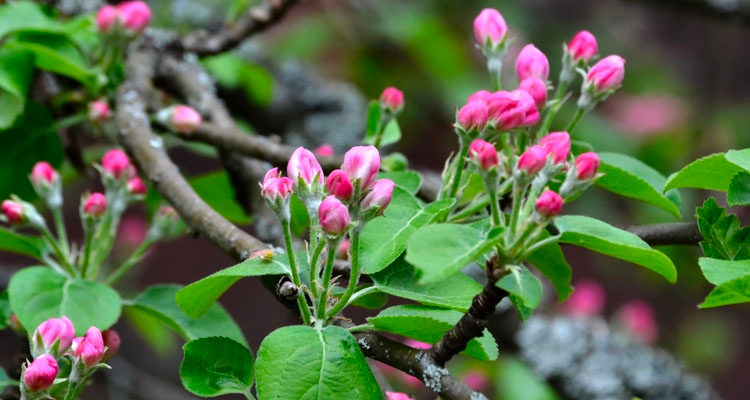
While nitrogen encourages the growth of leaves, branches and stems, it may hinder your plants from flowering and producing fruits.
In this case, the best remedy is to use a low-nitrogen fertilizer with high phosphorus and potassium content to encourage flower and fruit formation.
Nitrogen-Free Commercial Fertilizers
Nitrogen-free fertilizers contain only phosphorus and/or potassium and no nitrogen at all.
Here are the eight most common nitrogen-free fertilizers that you can find in the market and how to use them in your garden.
1. Lesco Crabgrass Control: 0-0-7
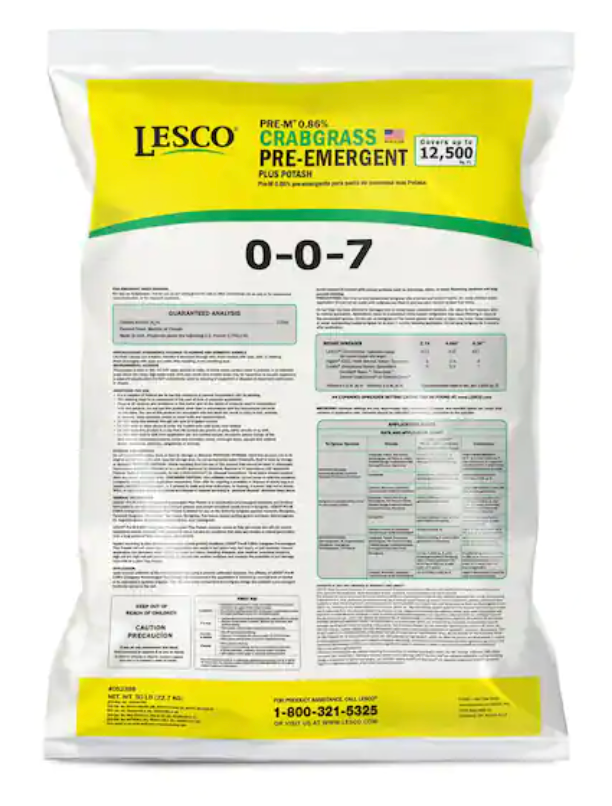
| Use/s | • Crabgrass control • Supplement soil’s potassium content |
| Use On | Grass or lawns |
The Lesco Crabgrass Control contains only 7% of potassium. It’s commonly used to control crabgrass and to supplement soils with potassium deficiency.
Every 50-pound bag of this fertilizer can cover up to 12,000 square feet. When applying the Lesco Crabgrass Control, make sure to use a rotary spreader and wear gloves to avoid the chemical from staining your skin.
2. K-Mag Fertilizer: 0-0-22
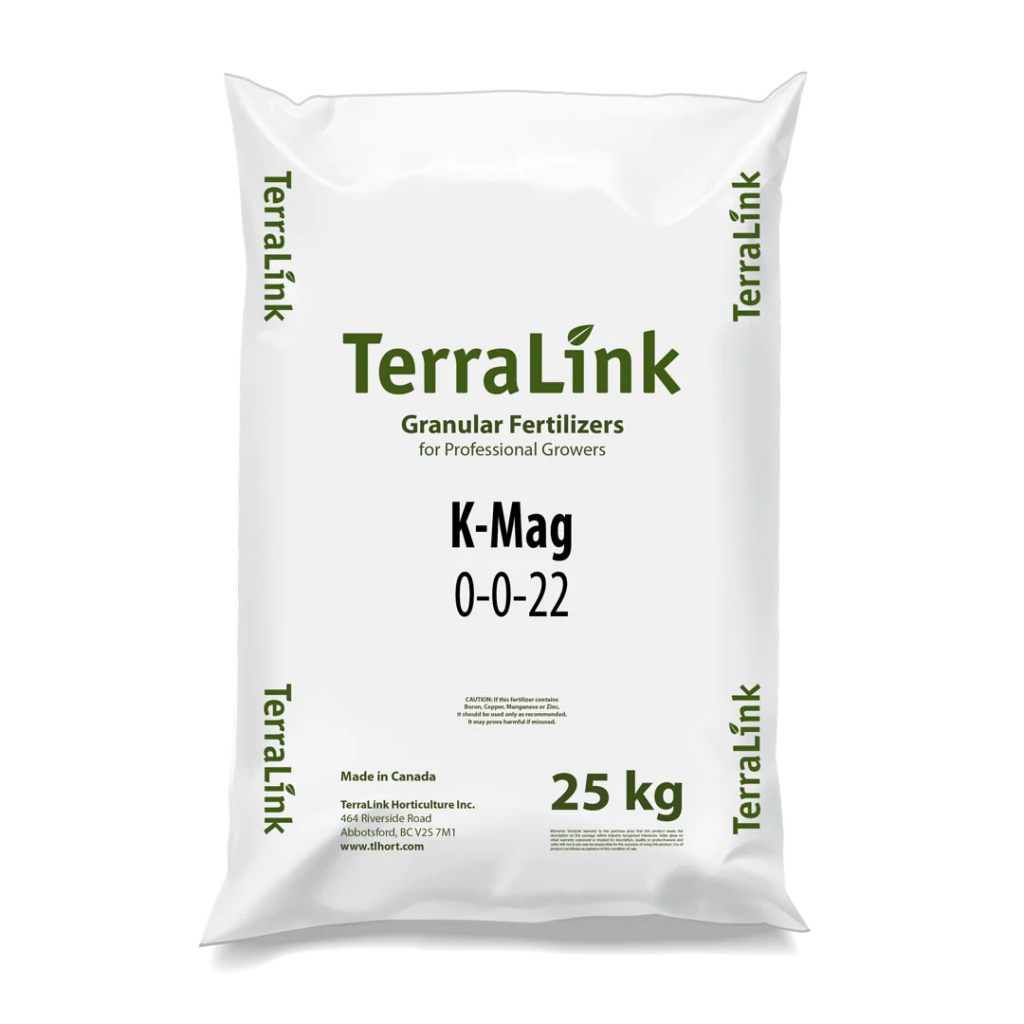
| Use/s | Supplement soil’s sulfur, potassium and magnesium content |
| Use On | • Rosebush • Fruit trees |
K-Mag is a water-soluble fertilizer that provides sulfur, potassium and magnesium to the soil. That’s why it’s also called “Sul-Po-Mag.”
It does not contain any nitrogen or phosphorus and can easily be absorbed by plants after application. When applying K-Mag, water the fertilizer to help it dissolve gradually and allow the plants to receive all the nutrients it contains.
3. Muriate of Potash: 0-0-62
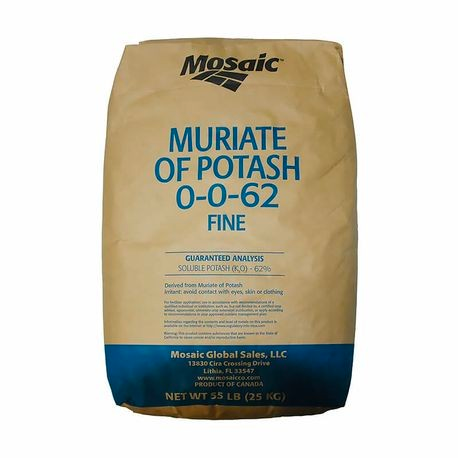
| Use/s | • Supplement soil’s potassium deficiency • Helps protect against plant diseases • Encourages root and fruits growth |
| Use On | • Carrots • Beets • Potatoes |
The Muriate of Potash is a fertilizer rich in potassium content, precisely 62% of this nutrient by weight.
Chemically known as potassium chloride, this fertilizer helps protect plants against diseases and encourages their root growth and fruit formation. It’s commonly used as fertilizer for root and tuber crops like potatoes, beets and carrots.
4. Hi-Yield Bone Meal: 0-10-0
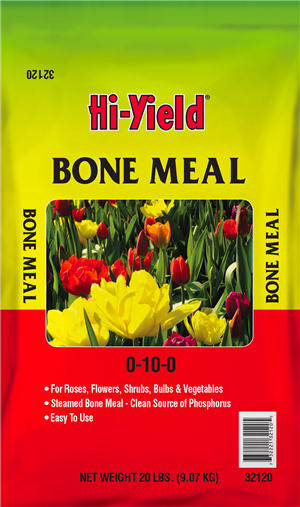
| Use/s | • Supplement soil’s phosphorus deficiency • Helps plants’ root systems and plant growth |
| Use On | • Vegetables • Roses • Bulbs • Shrubs • Flowers |
Bone meal usually comes from recycled waste products, like bones, from slaughterhouses. They’re rich in phosphorus, having 10% of it by weight, and without nitrogen and potassium.
When applied to plants, bone meal is a slow-release fertilizer, leaving you one less problem from having high phosphorus concentration in the soil.
This fertilizer helps plants grow sturdy root systems and speed up their growth. It’s an excellent choice for vegetable gardens, shrubs, roses, bulbs and other flowering plants.
5. Sulfate of Potash: 0-0-50
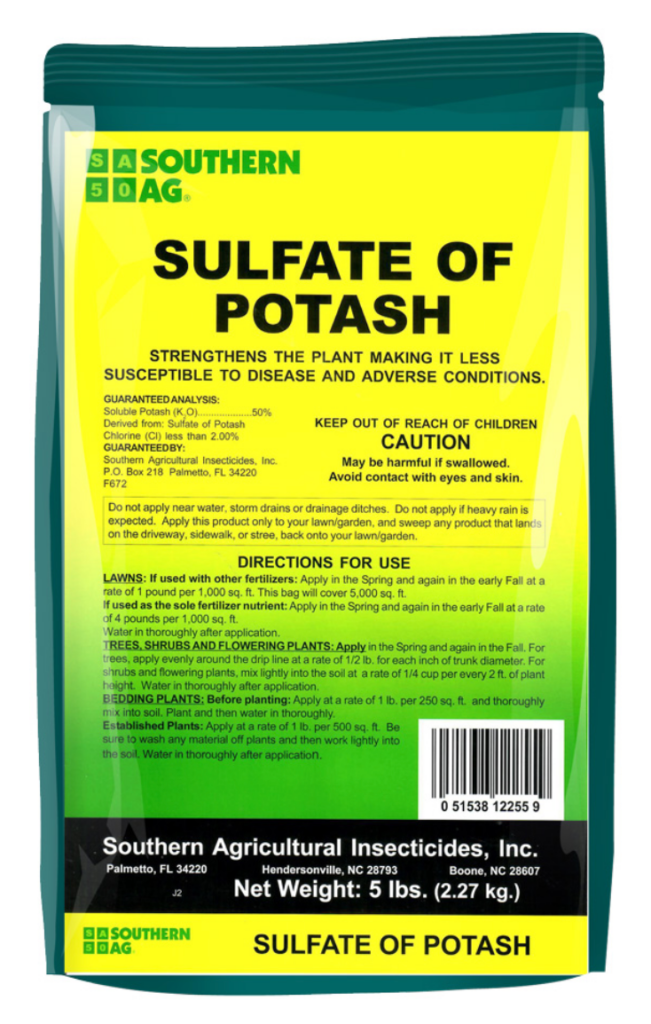
| Use/s | • Helps plants resist pests and diseases • Helps grow tastier produce |
| Use On | • Avocado • Beans • Corn • Cherries • Citrus trees • Palms • Roses • Shrubs • Lawns |
The Sulfate of Potash, also known as potassium sulfate or SOP, has 50% high potassium content by weight, without nitrogen or phosphorus.
Because of its high potassium content, apply little fertilizer gradually to avoid over-fertilizing and burning your plant.
Use Sulfate of Potash if you want your plant to resist pests and diseases and to harvest tastier fruits.
6. Grow More 5088 Water Soluble Fertilizer: 0-50-30
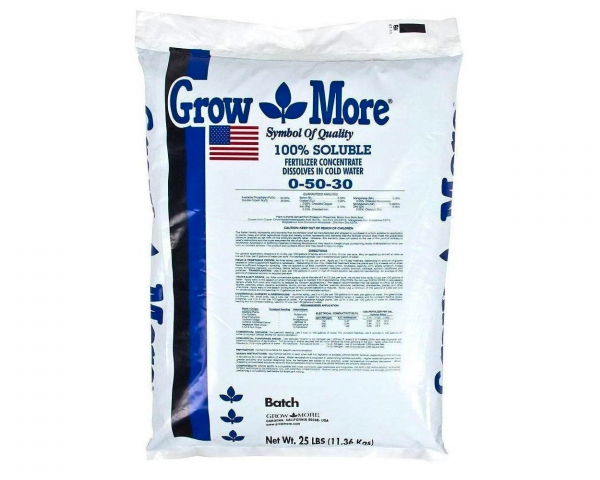
| Use/s | Provides plant with extra vigor and growth |
| Use On | • Field • Vegetables • Nursery crops |
The Grow More fertilizer contains 50% phosphorus, 30% potassium by weight and no nitrogen at all.
Since this fertilizer has high nutrient content, remember that a small amount can go a long way. It’s also water soluble, so plants can easily absorb the nutrients by watering them after application.
Grow More fertilizers are best used for vegetables grown in cool climate conditions and for hastening plant growth.
7. Alaska Morbloom: 0-10-10
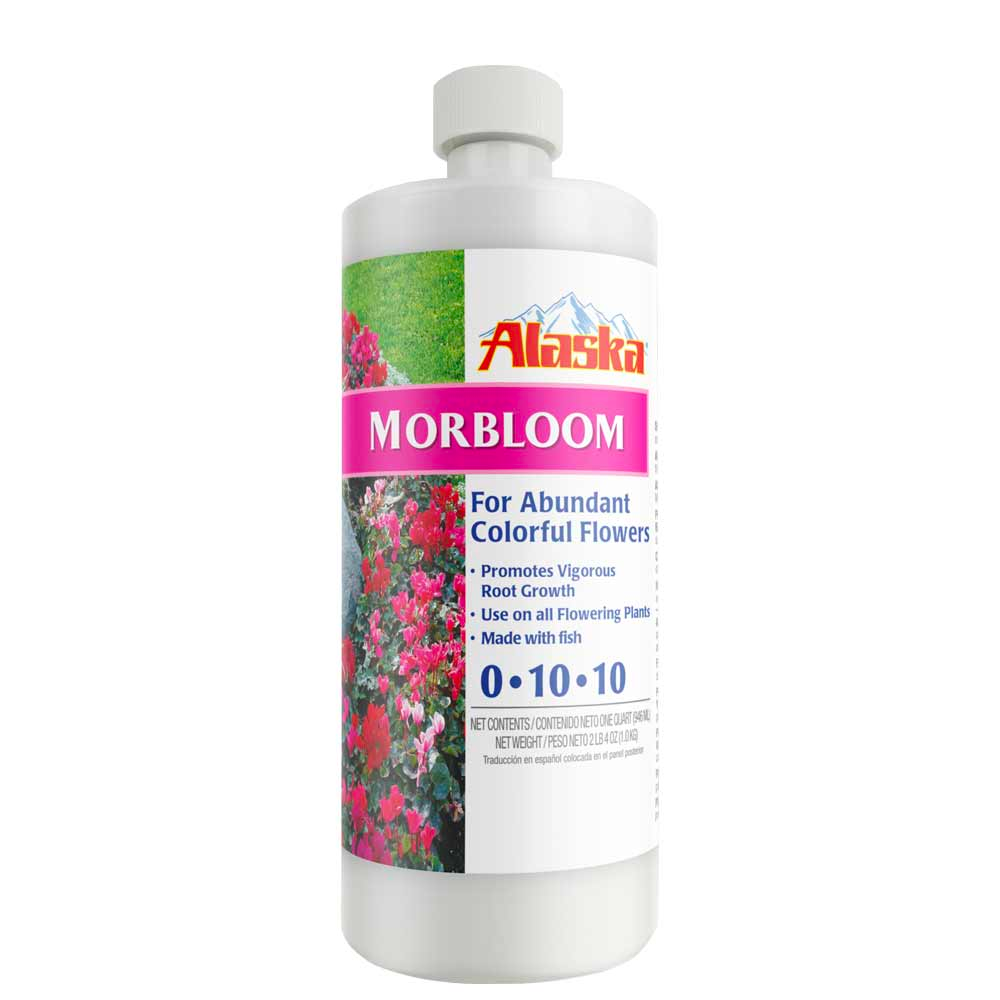
| Use/s | • Helps budding and flowering of plants • Boosts vigorous root growth |
| Use On | • Outdoor plants • Flowering plants • Bulbs • Vegetables • Herbs • Berries |
The Alaska Morbloom fertilizer contains an equal dose of phosphorus and potassium. It’s a plant food made with natural-based fish.
If your soil already has mixed compost and manure that are high in nitrogen, you can add the Alaska Morbloom to restore the balance and provide phosphorus and potassium in the soil.
This fertilizer encourages root growth, budding and flowering in plants. It’s best used to care for flowering plants in lawns or gardens.
8. Other Non-Nitrogen Additives
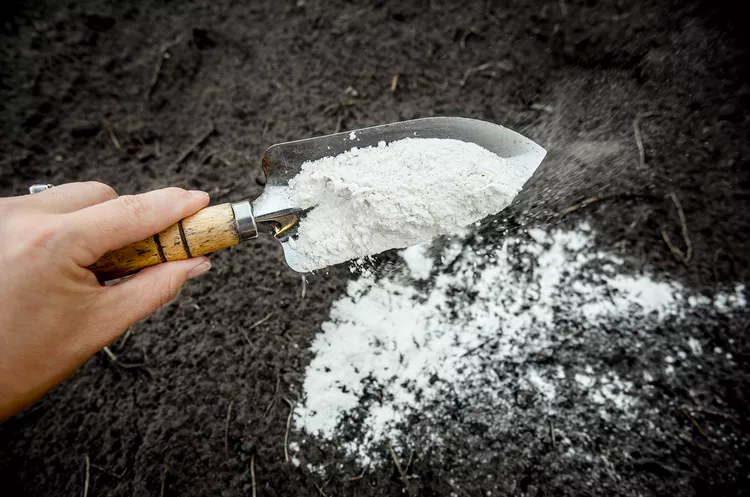
| Use/s | Supplement plant nutrients |
There are also soil additives that supplement plant nutrients and contain no nitrogen at all, which are:
- Sulfur – Adds sulfur and lowers soil pH
- Lime – Adds calcium and raises soil pH
- Chelated iron – Adds iron for plant absorption
- Epson Salt – Adds magnesium and sulfur to the soil.
Chelated iron and Epsom salt can also be applied through foliar feeding, where plants absorb nutrients through their leaves.
Other soil additives without nitrogen are fish emulsion, cottonseed meal and blood meal.
Low Nitrogen Organic Fertilizers
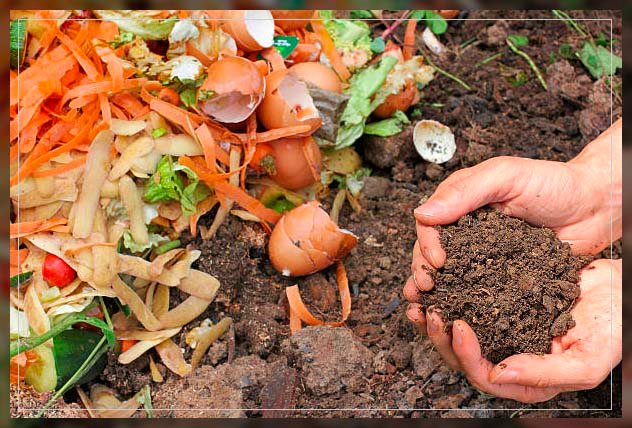
Generally, when using organic fertilizers, low amounts of nitrogen but high carbon content are released to plants. This makes them another excellent option for using low-nitrogen fertilizers.
There are four types of natural low-nitrogen fertilizers that you can also use: bone meal, low-nitrogen mulch, low-nitrogen compost, and low-nitrogen manure.
Let’s get to know them one by one.
1. Bone Meal
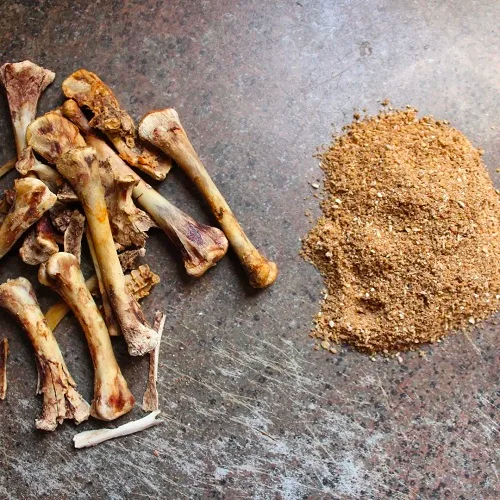
| Use/s | • Supplement soil’s calcium and phosphorus deficiency |
| Use On | • Roses • Tulips • Dahlias • Lilies • Radishes • Onions • Carrots • Bulbs |
Bone meal contains a high amount of calcium and phosphorus but little to no nitrogen. It comes from dried animal bones that are grounded to produce a fine powder.
It’s commonly used to increase phosphorus content in soil to achieve optimum gardening yield during spring.
This organic fertilizer delivers nutrients slowly and steadily to garden flowers, fruits and vegetables.
2. Low-Nitrogen Mulch
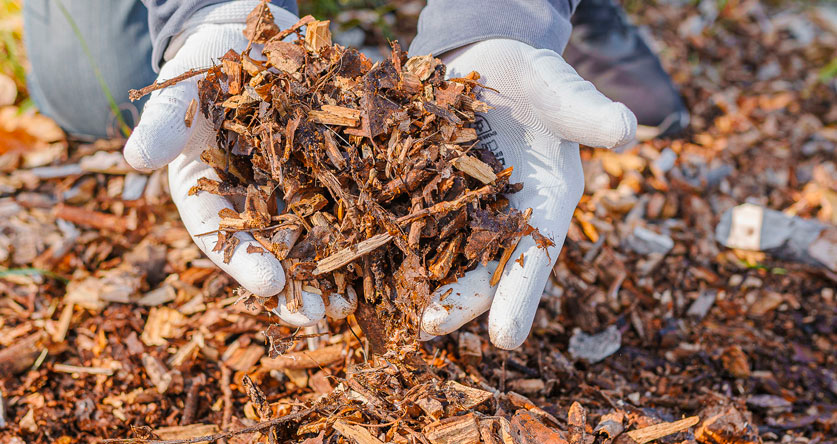
| Use/s | • Insulates the soil from changes in temperature • Retains water • Provides organic material |
| Use On | • Ficus • Black Olive • Ferns • Palms |
Low-nitrogen mulches that you can use are wood chips or wood ashes.
Wood chips are high in carbon and help break down organic material for your garden. On the other hand, wood ash contains no nitrogen, 5% phosphorus and 7% potassium by weight.
Low-nitrogen mulch is an excellent choice if you would like to naturally insulate the soil from temperature fluctuations and retain water moisture in the soil. Further, after decomposition, it will provide organic material for your garden.
3. Low Nitrogen Compost
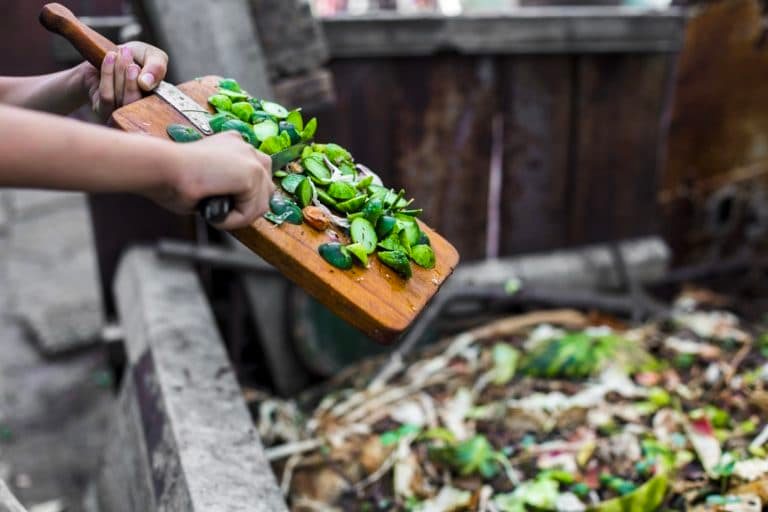
| Use/s | • Provides nutrients and organic material |
| Use On | • Sweet potatoes • Watermelons • Carrots • Beets • Turnips • Parsnips • Lettuce • Legumes |
Compost becomes low in nitrogen depending on what you place in the compost pile. If you add “browns” like sawdust and straws, the compost will have a high carbon content and do not release nitrogen to plants.
On the other hand, do not place “greens” like grass clippings or cuttings from plants in the pile because they are high in nitrogen.
Composts provide nutrients and organic material to gardens through the decomposed waste that slowly releases nutrients into the soil.
4. Low-Nitrogen Manure
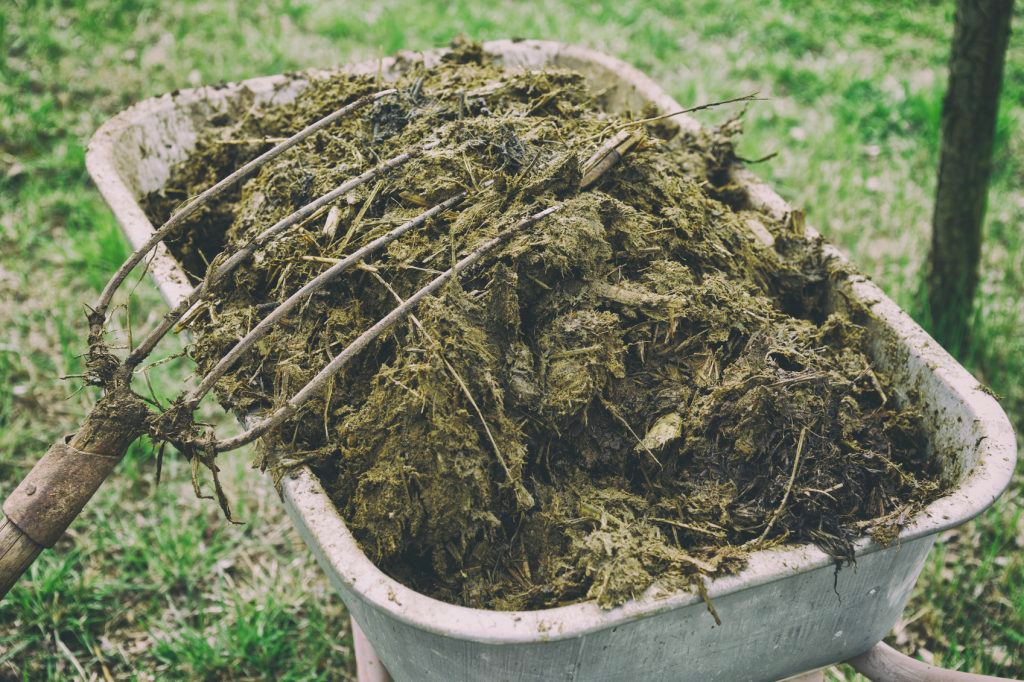
| Use/s | Adds organic material to the soil |
| Use On | Vegetable gardens |
Manure is known for having high nitrogen content. So, you’ll have to learn from which animal the waste that you’ll be using comes to avoid burning your plants.
Cattle manure is known for having the lowest nitrogen content, with only 0.5 to 2% of this nutrient. On the other hand, chicken manure has high nitrogen content with 6% nitrogen by weight.
If you want to add organic material and other nutrients to the soil, use low-nitrogen manure as a natural fertilizer without burning the plant.
Considerations Before Fertilizer Use
Whatever type of nitrogen you’re using, make sure to test the soil, read the label and consider the soil’s overall health before applying them. Here’s why.
1. Test the soil.
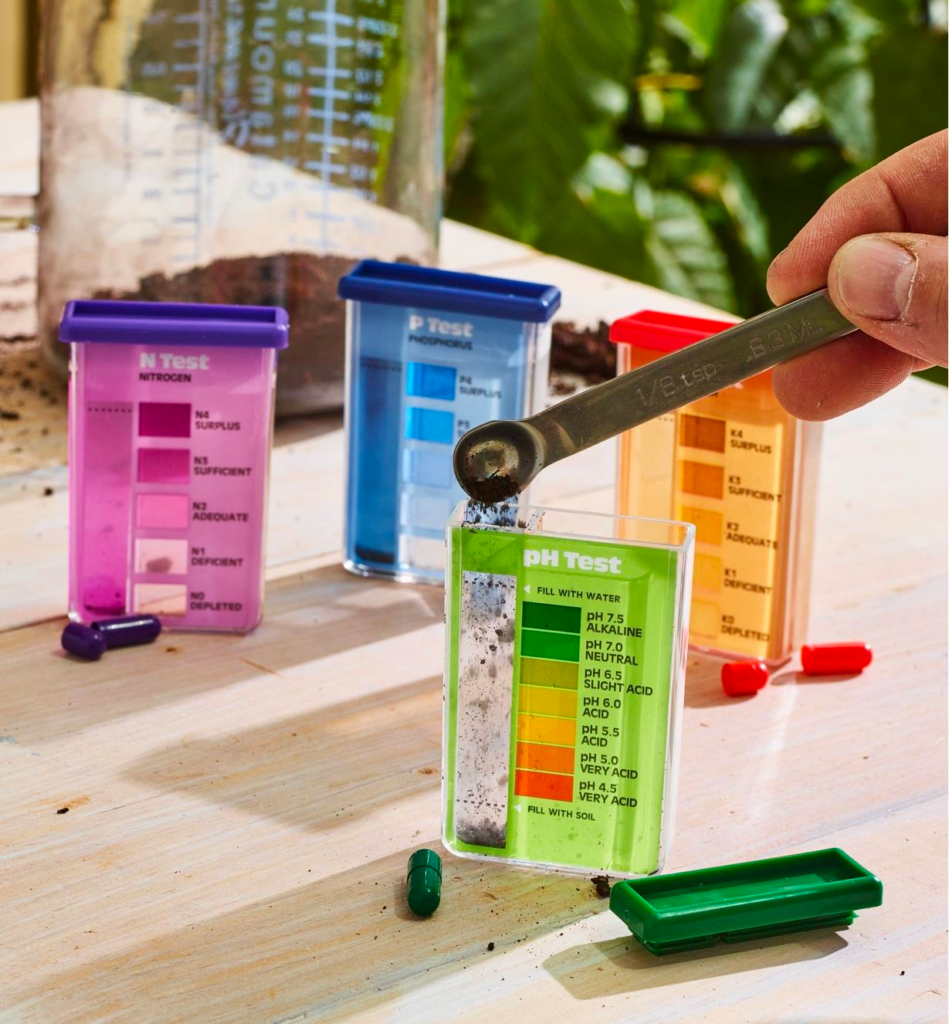
First things first, you should perform a soil test before adding fertilizers to your plant or garden.
The ideal pH level for most plants is between 6.0 to 7.0. Anything below 7 is acidic, while anything above 7 is alkaline, and a pH of 7 is neutral.
| Difficulty | Easy ●○○○○ |
| Duration | 30 minutes to 1 hour |
| Things You Need | • Soil test kit • Gloves • Distilled water |
A soil test will inform you of the soil’s pH and nutrient level. This way, you could make a more informed decision on properly treating your soil through fertilizers or other amendments.
| How to Use a Soil Test Kit 1. Wear gloves to avoid contaminating the soil sample. 2. Take 2 to 3 tablespoons of soil at a depth of at least 6 inches below the ground. This is where your plant’s roots draw nutrients from the soil. 3. Remove stones or other debris from the sample. 4. Spread the soil sample on a tray and leave it out to dry overnight. 5. Place the soil sample in the test chamber of your soil test kit. Make sure to fill up the chamber to the soil line. 6. Open a test capsule for the pH or nutrient level you want. 7. Pour the powder into the test chamber over the soil. 8. Add distilled water to the test chamber following the water line. 9. Seal and shake the test chamber until the soil, powder and water are thoroughly mixed. 10. As the water changes color, match it with the indicated pH or nutrient level of the soil test kit instructions or label. |
2. Read the label.
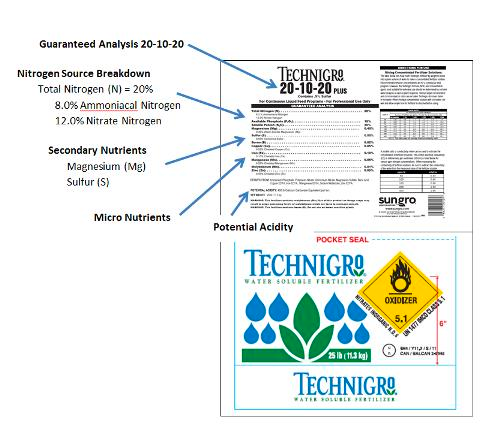
All plants have different needs in every stage of their growth. Make sure to follow the instructions indicated on the label before using them in your garden.
When there’s too much fertilizer, plants get fertilizer burns which can either damage or kill them. That’s why adding little fertilizer first is better than removing it after application.
Remember these, especially when using fast-release fertilizers, because once they dissolve in water, plants absorb the nutrients but can burn your plants immediately.
3. Look at the overall soil health.
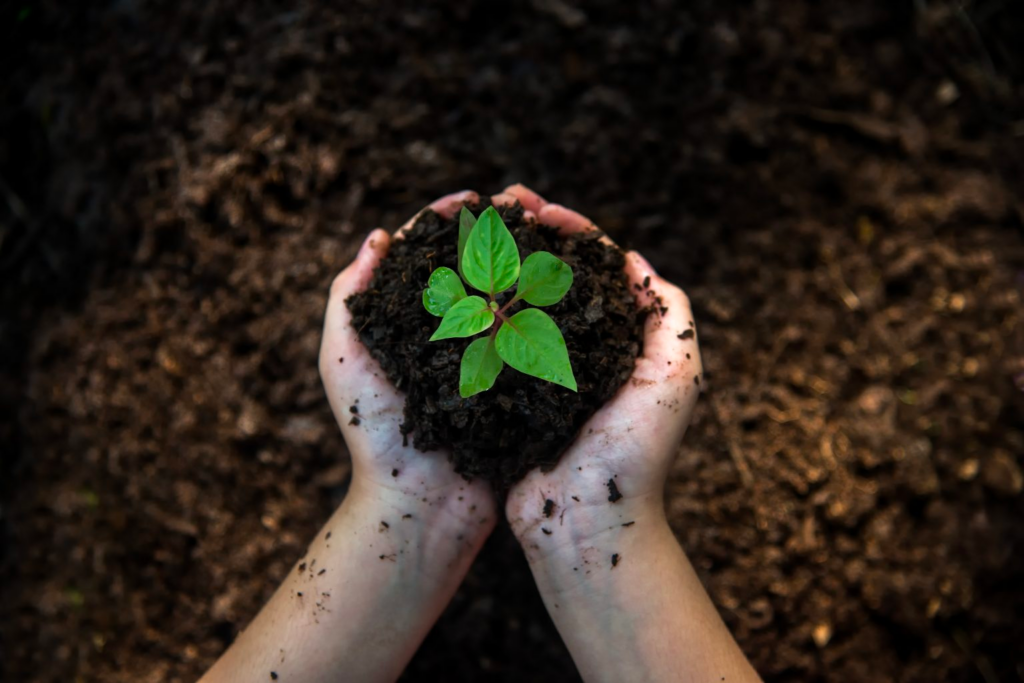
Not all things can be solved using fertilizers. That’s why they’re primarily used as a soil supplement.
It’s still best to look after your garden’s soil health and use compost, mulch, manure and other natural additives. They can solve problems like soil texture, water retention and soil organisms, which fertilizers cannot do.
For instance, compost can help clay soil drain better, and sandy soil retains more water. Compost also helps earthworms and other nitrogen-fixing bacteria to improve soil quality and make nutrients available to the plants.
FAQs on Low Nitrogen Fertilizer
A complete fertilizer contains nitrogen, phosphorus and potassium to ensure plants get all the major nutrients they need for optimum growth and development.
Low-nitrogen fertilizer is good for encouraging plants to flower and produce fruits.
Nitrogen helps plants grow strong leaves, stems and branches.
Check the NPK label in your fertilizer. If the first number is below 3, then it means the fertilizers have little to no nitrogen content.
Lack of nitrogen in the soil is usually caused by excessive irrigation or heavy rain, which wash away nitrogen from the soil. Nitrogen deficiency commonly happens to sandy and well-drained soil.
Plants tend to have stunted growth, yellow leaves, and smaller fruits and flowers whenever there is too little nitrogen in the soil.




